Understanding the Notes On A Guitar fretboard is a foundational skill for any aspiring guitarist. While the seemingly vast expanse of frets might appear daunting at first, learning the notes is more accessible than you might think. Knowing your fretboard unlocks a deeper understanding of music, allowing you to find chords, scales, and melodies with greater ease. This guide will break down the fretboard note by note, providing you with the knowledge and tools to navigate your guitar neck like a pro.
The Foundation: The Musical Alphabet
Before diving into the fretboard itself, it’s crucial to grasp the basics of the musical alphabet. Unlike the standard alphabet, the musical alphabet consists of only seven natural notes: A, B, C, D, E, F, and G. These are considered “natural” because they don’t include sharps or flats. Think of these seven notes as the building blocks from which all other notes are derived. Once you understand these, learning the sharps and flats becomes a simple matter of moving up or down by half steps.
 The Musical Alphabet
The Musical Alphabet
Sharps and Flats: Navigating the Half Steps
Sharps (#) and flats (♭) represent notes that are a half-step away from the natural notes. A half-step is the smallest interval in Western music and corresponds to one fret on the guitar.
A sharp (♯) raises a natural note by a half-step. For example, moving a half-step up from A results in A♯.
Conversely, a flat (♭) lowers a natural note by a half-step. Moving a half-step down from A gives you A♭.
A key point of potential confusion is that the same note can have two different names, depending on whether you are moving up or down. For instance, the note between D and E can be called D♯ (D sharp) if you are ascending from D, or E♭ (E flat) if you are descending from E. This is known as enharmonic equivalence, and the specific name often depends on the musical key you are playing in.
 Sharps & Flats
Sharps & Flats
The BC and EF Exception
A crucial rule to remember is the “BC and EF rule.” All natural notes are separated by a whole step (two frets), except between B and C, and between E and F. These pairs are only a half-step apart. This means there is no sharp or flat note between B and C, or between E and F. Moving a half-step up from B takes you directly to C, and moving a half-step down from F takes you directly to E.
Open Strings: Your Starting Points
To begin mapping notes on your guitar, you need to know the names of your open strings in standard tuning. From the thickest string to the thinnest, the open string notes are: E, A, D, G, B, and E. Playing an open string, meaning you pluck the string without pressing down on any fret, will produce these notes. These open string notes serve as your initial reference points for learning the fretboard. Notice that the lowest and highest strings are both E notes, but they are two octaves apart, meaning they share the same note names across the fretboard.
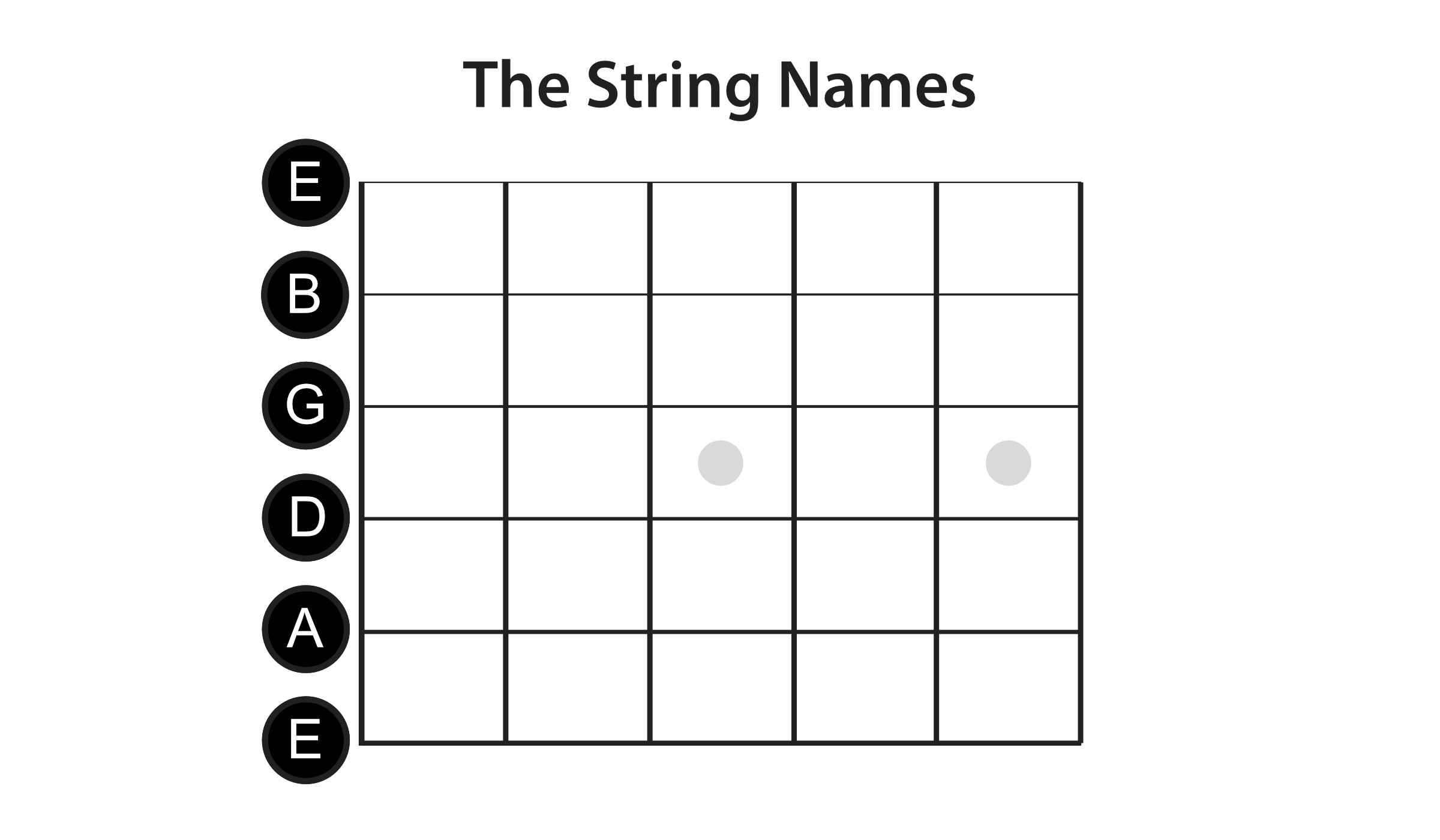 Guitar String Names
Guitar String Names
Ascending the Fretboard: Counting Notes
With the open string notes as your foundation, you can now start counting up the frets to discover the notes along each string. Each fret represents a half-step increase in pitch. Starting from the open string note, simply ascend through the musical alphabet, remembering to incorporate sharps and flats and the BC and EF rule.
E String Notes
Starting with the low E string, the open string is E. The first fret is a half-step up, which is F (no E# due to the EF rule). The subsequent frets continue up the musical alphabet, incorporating sharps where needed.
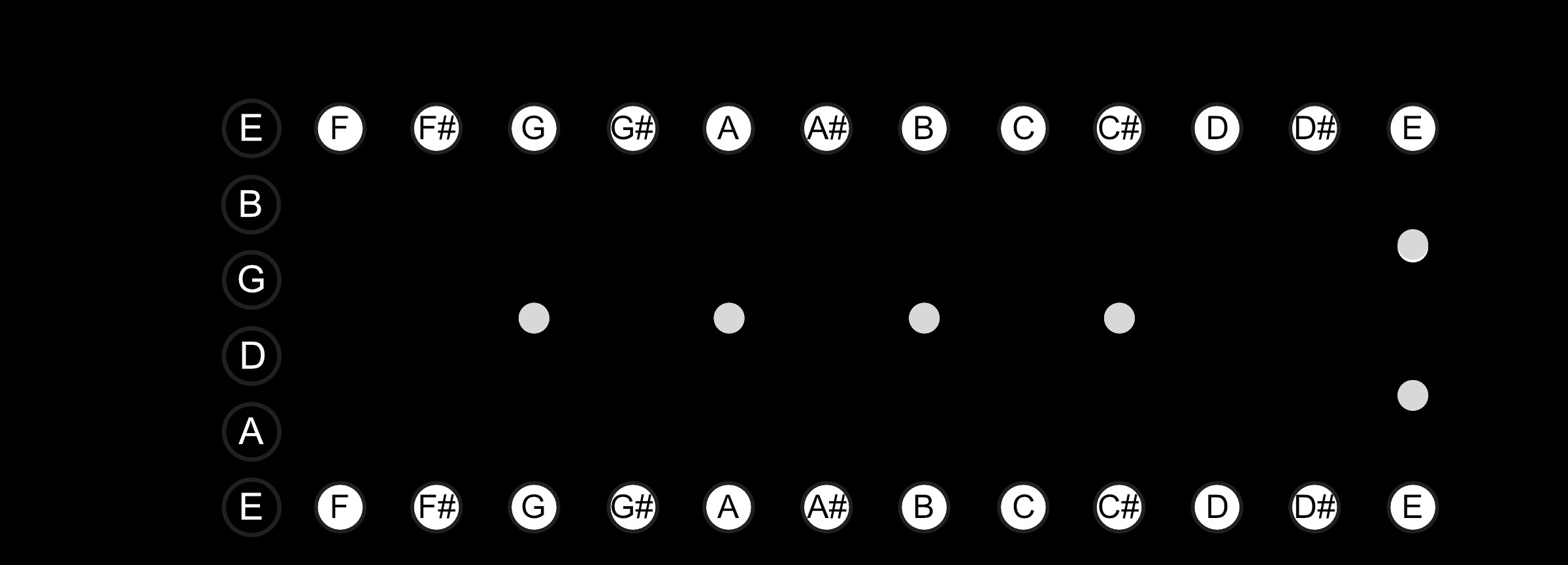 E String Note Names
E String Note Names
A String Notes
Moving to the A string, the open string is A. The first fret is A#, followed by B at the second fret, and so on.
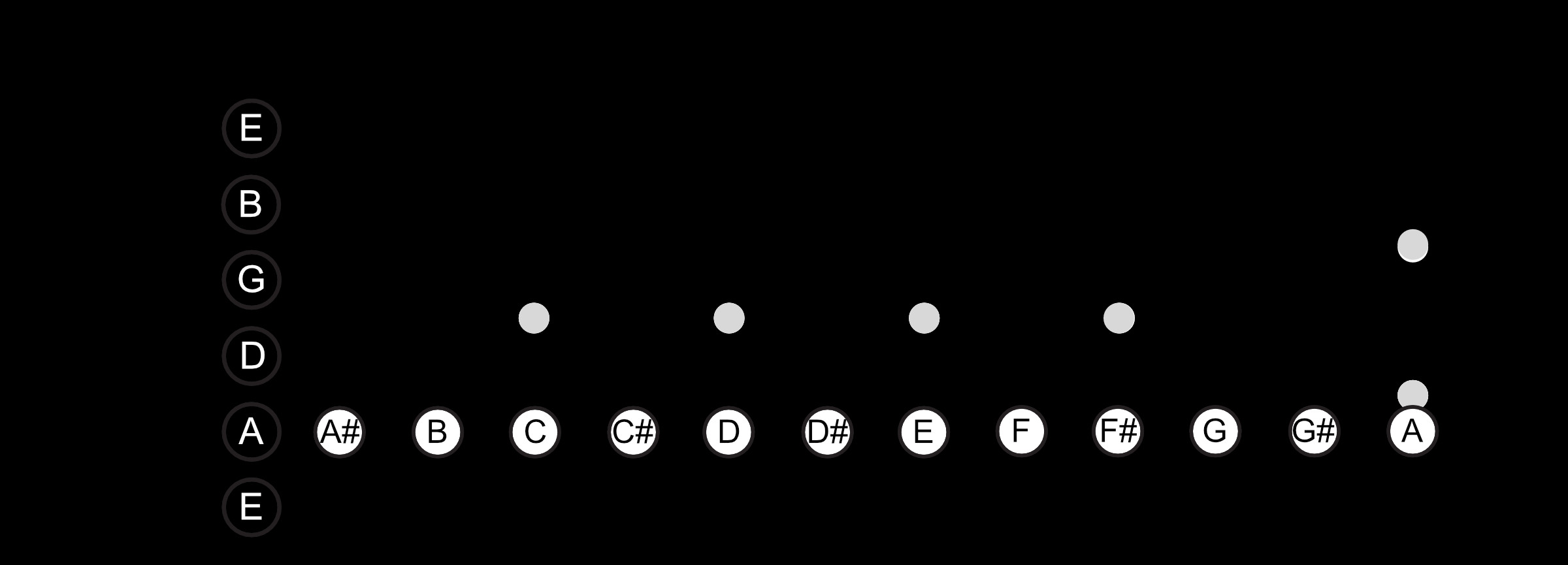 A String Note Names
A String Note Names
D String Notes
The open D string follows the same pattern. Starting on D, each fret ascends chromatically.
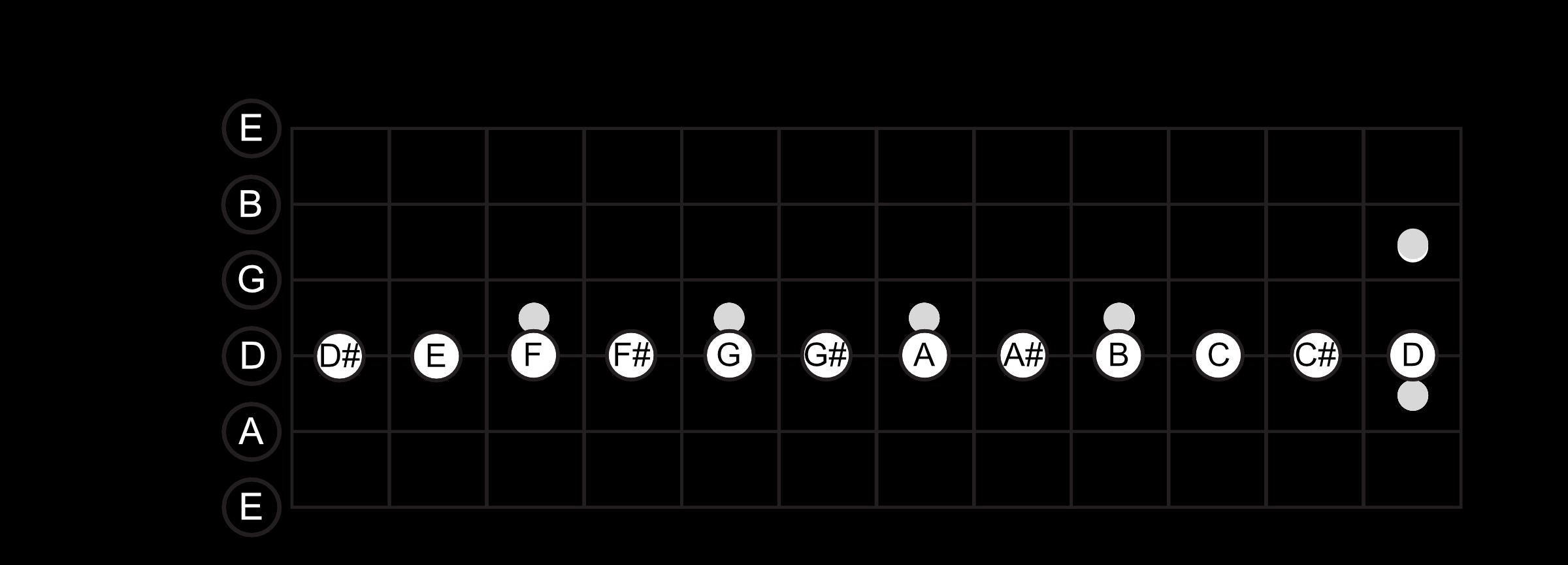 D String Note Names
D String Note Names
G String Notes
Continuing this pattern for the G string, starting with G as the open note.
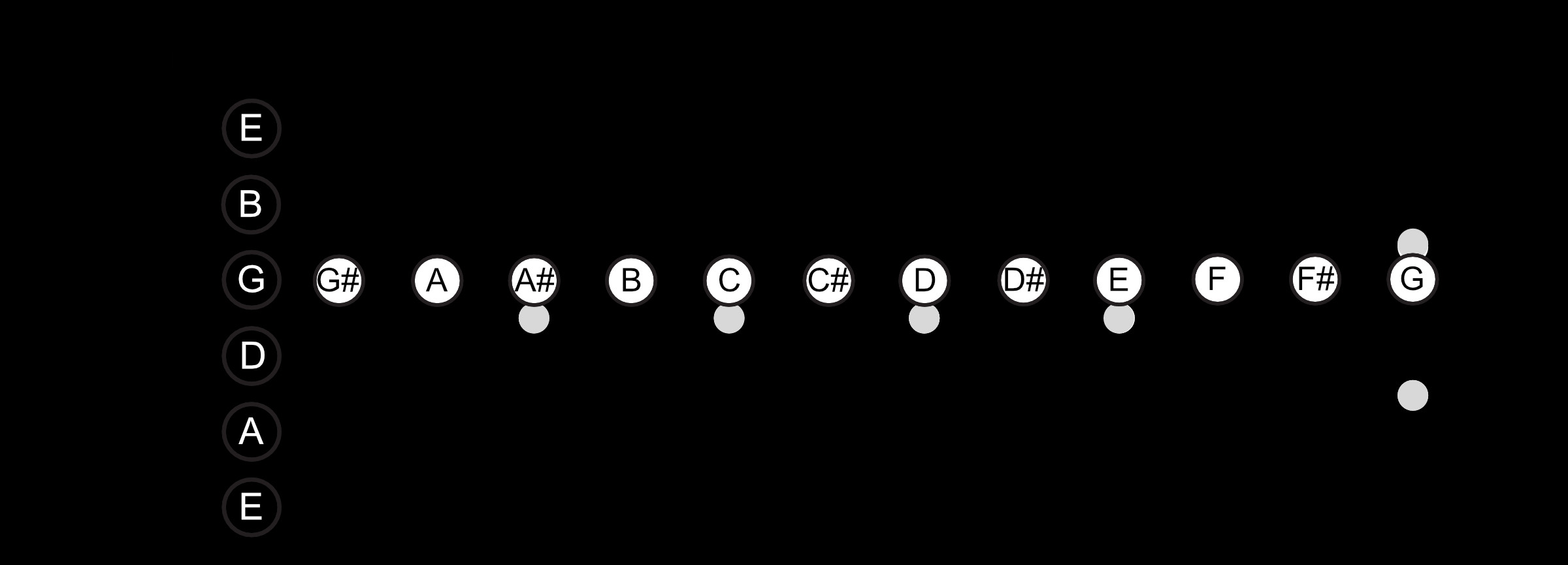 G String Note Names
G String Note Names
B String Notes
Finally, the B string, starting on B. Remember the BC rule when ascending from B to C at the first fret.
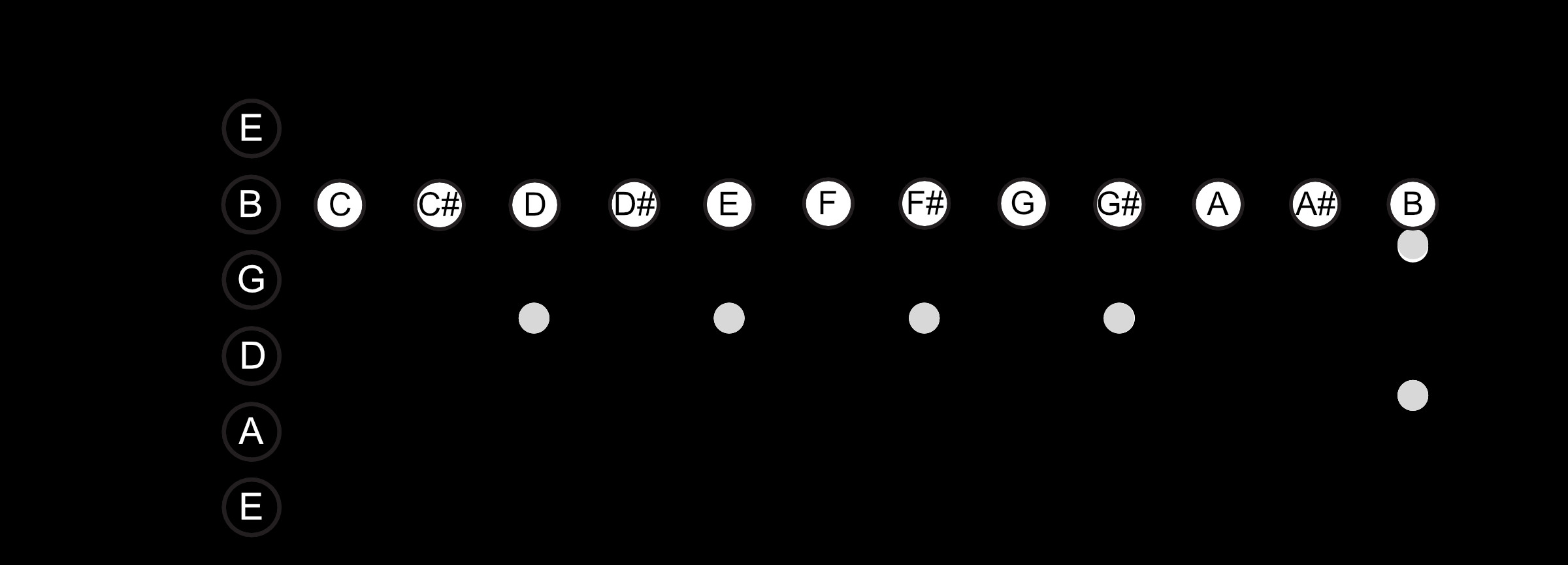 B String Note Names
B String Note Names
The 12th Fret: The Octave Point
Here’s a helpful shortcut: the notes on the fretboard repeat every 12 frets. The 12th fret marks the octave, meaning the note at the 12th fret will be the same note name as the open string, but an octave higher in pitch. For example, on the B string, the open string is B, and the 12th fret is also B. This significantly reduces the amount you need to memorize, as you only need to learn the notes within the first 12 frets. Fret 13 will then correspond to the note at the 1st fret, fret 14 to the 2nd, and so on.
Octave Shapes: Connecting the Fretboard
Another powerful technique for mastering the fretboard is understanding octave shapes. Octaves are the same note, just at a higher or lower pitch. Knowing octave shapes allows you to quickly locate the same note in different positions on the fretboard. A common and useful octave shape involves notes that are two strings apart and two frets higher (or lower).
For instance, if you find a note on the E string, you can find the same note an octave higher by moving two strings towards the thinner strings (to the D string) and two frets higher. Conversely, you can find the octave lower by moving two strings towards the thicker strings and two frets lower.
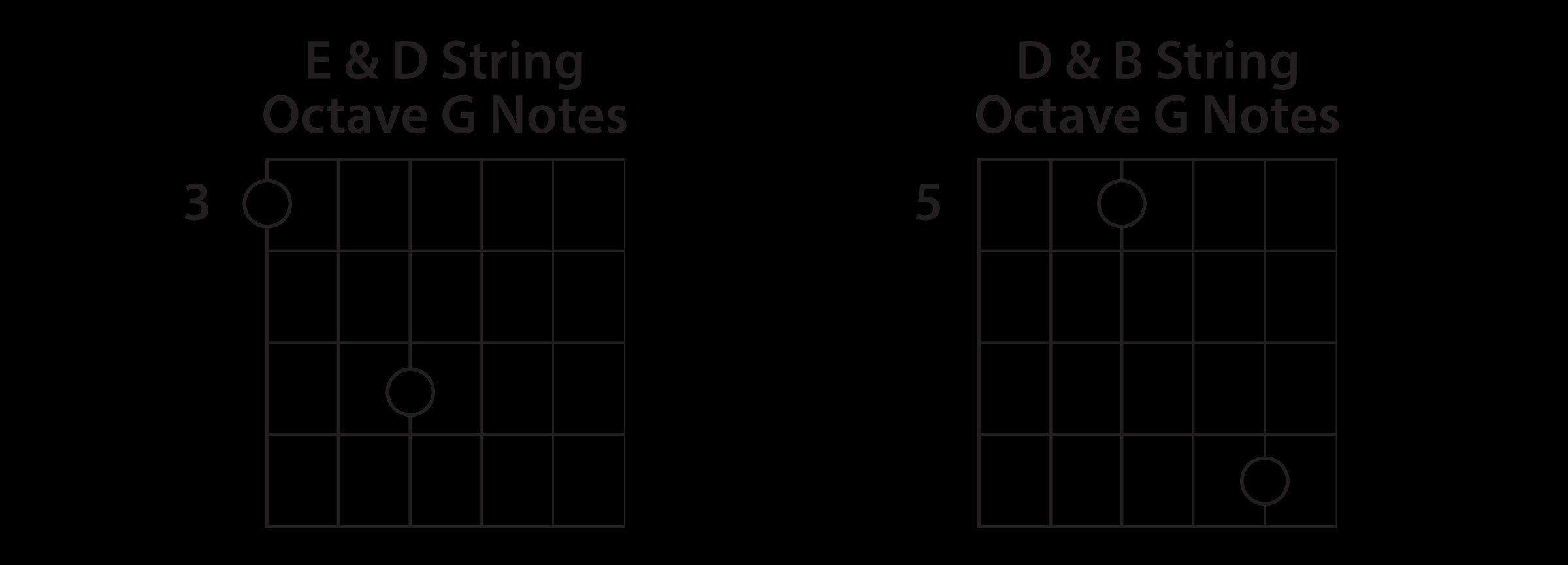 E & D String Octave Centers
E & D String Octave Centers
Similarly, you can use the A string as a reference to find octaves on the G string, and the G string to find octaves on the high E string, using a slightly adjusted shape due to the tuning difference between the G and B strings.
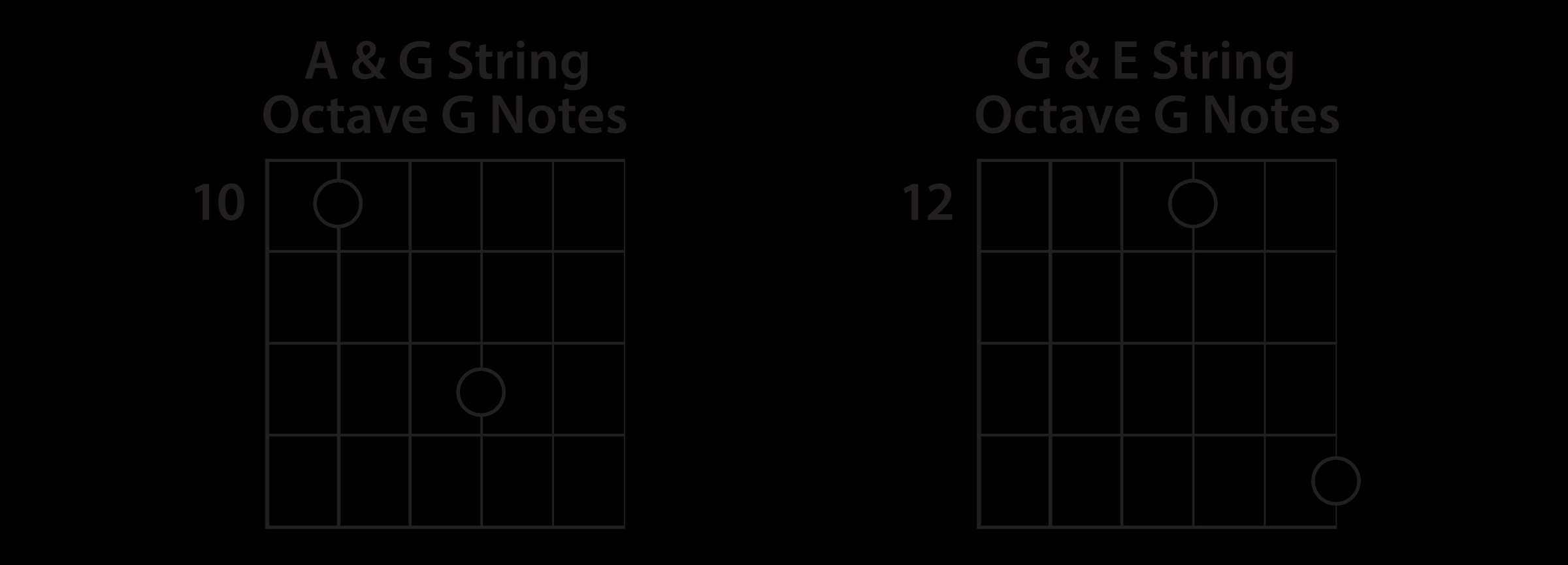 A & G String Octave Centers
A & G String Octave Centers
Putting It All Together
Learning the notes on a guitar is a journey that combines understanding music theory with practical application on the instrument. Start by memorizing the natural musical alphabet, the concepts of sharps and flats, and the open string notes. Then, systematically work through each string, counting up the frets and applying the BC and EF rule. Focus on mastering the notes on your E and A strings first, as these will serve as crucial reference points for navigating the rest of the fretboard using octave shapes. With consistent practice and these helpful techniques, fretboard mastery and a deeper understanding of music theory are within your reach.
